Mark Anthony Neal's Blog, page 631
March 29, 2016
Sonics + Visuals: "Elevations" (Prod. Kriswontwo) --Georgia Anne Muldrow + Oh No + El Da Sensei
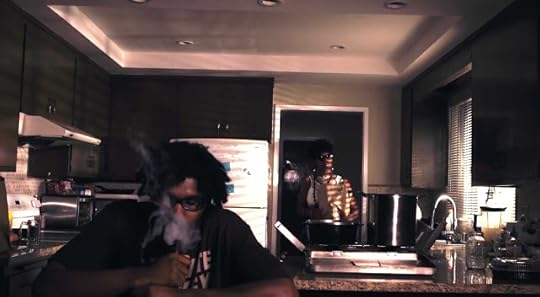 Director Alex Frantz Ghassan: "The concept for "Elevate" was to take the viewer to a higher visual consciousness. Making the viewer re-evaluate the imagery they consume. We are presented with urban themes that could ring synonymous with crime, drug use, and urban life. What could be perceived as sinister could also be the opposite if we dig deeper. If we ignore popular opinion and look at it objectively for what it really is, we can see the truth." Kriswontwo debut album CEREMONI out now on Someothaship Connect.
Director Alex Frantz Ghassan: "The concept for "Elevate" was to take the viewer to a higher visual consciousness. Making the viewer re-evaluate the imagery they consume. We are presented with urban themes that could ring synonymous with crime, drug use, and urban life. What could be perceived as sinister could also be the opposite if we dig deeper. If we ignore popular opinion and look at it objectively for what it really is, we can see the truth." Kriswontwo debut album CEREMONI out now on Someothaship Connect.
Published on March 29, 2016 03:17
Live from the Reading Room: Josephine Baker Writes to Japanese Journalist Sumio Matasuo.
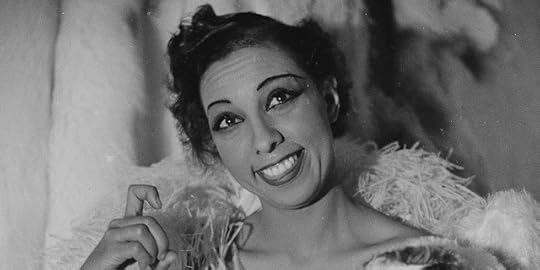 'This episode of
Live from the Reading Room
features a letter from Civil Rights activist, dancer, singer, and actress Josephine Baker to Japanese journalist, Sumio Matasuo. Aisha Diori, Special Events Manager, Schomburg Center for Research in Black Culture, reads the letter aloud in a voiceover.' 'Live from the Reading Room is a podcast series that aims to share interesting and engaging letters written by or to key historical figures from the African Diaspora. Each episode highlights a letter from popular collections housed in the Manuscripts, Archives and Rare Books Division at the Schomburg Center for Research in Black Culture, New York Public Library.'
'This episode of
Live from the Reading Room
features a letter from Civil Rights activist, dancer, singer, and actress Josephine Baker to Japanese journalist, Sumio Matasuo. Aisha Diori, Special Events Manager, Schomburg Center for Research in Black Culture, reads the letter aloud in a voiceover.' 'Live from the Reading Room is a podcast series that aims to share interesting and engaging letters written by or to key historical figures from the African Diaspora. Each episode highlights a letter from popular collections housed in the Manuscripts, Archives and Rare Books Division at the Schomburg Center for Research in Black Culture, New York Public Library.'
Published on March 29, 2016 03:04
March 28, 2016
TedxTalks: Bomani Jones on "The Freedom of Structure"
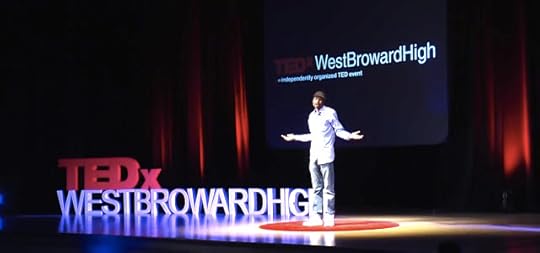 'Bomani Jones, an ESPN television and radio host, explores how the use structure in everything you do allows the freedom to create anything you want.' -- +TEDx Talks
'Bomani Jones, an ESPN television and radio host, explores how the use structure in everything you do allows the freedom to create anything you want.' -- +TEDx Talks
Published on March 28, 2016 18:49
Angela Davis on Presidential Candidates: "I Think We Need a New Party"
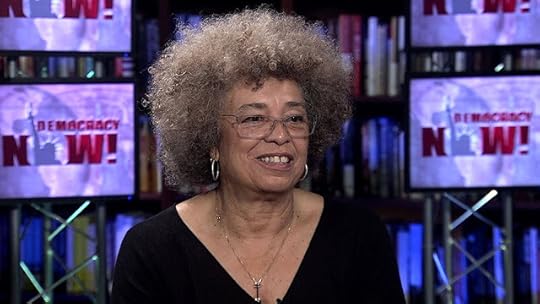 '+Democracy Now! speaks with author, activist and scholar Angela Davis. An icon of the 1970s Black Liberation Movement, Davis’ work around issues of gender, race, class and prisons has influenced critical thought and social movements across several generations. She is a leading advocate for prison abolition, a position informed by her own experience as a fugitive on the FBI’s top 10 most wanted list more than 40 years ago. Davis talks about the "fascist appeal" of Donald Trump and explains why she is not officially endorsing any candidate in this election.'
'+Democracy Now! speaks with author, activist and scholar Angela Davis. An icon of the 1970s Black Liberation Movement, Davis’ work around issues of gender, race, class and prisons has influenced critical thought and social movements across several generations. She is a leading advocate for prison abolition, a position informed by her own experience as a fugitive on the FBI’s top 10 most wanted list more than 40 years ago. Davis talks about the "fascist appeal" of Donald Trump and explains why she is not officially endorsing any candidate in this election.'
Published on March 28, 2016 17:39
#AspirationalSoul: Keni Burke--"Rising to the Top" (1982)
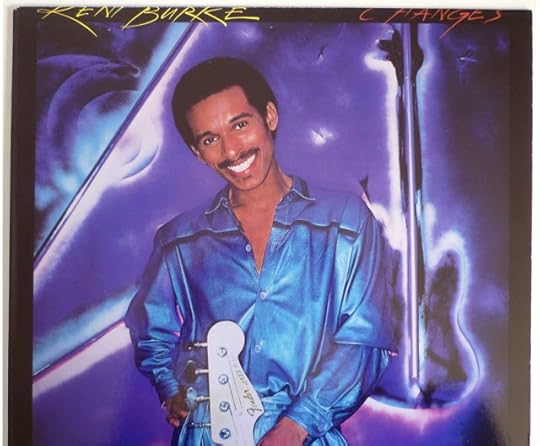
"Keep on believing / All the dreams inside of you / And don't stop achieving yeah / Let some love shine on through"
Published on March 28, 2016 04:28
March 27, 2016
Two Souls, Two Thoughts: The Art of African American History
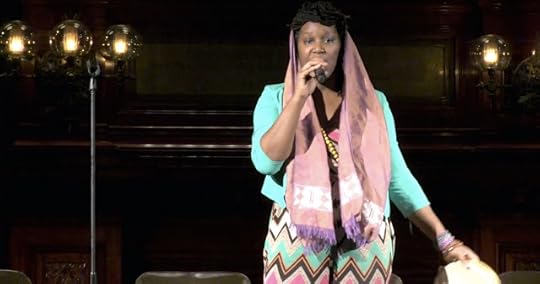 'A collaboration between the Aspen Institute Arts Program and the Park Avenue Armory, “Two Souls, Two Thoughts” gathered artists, writers, and cultural commentators to share their unique, ongoing, and evolving engagements with African American history. Moderated by writer and podcast host Stacia Brown, participants include vocalist and composer Imani Uzuri, multi-media artist Jasmine Murrell, novelist and playwright Darryl Pinckney, and writer Carl Hancock Rux.' -- +The Aspen Institute
'A collaboration between the Aspen Institute Arts Program and the Park Avenue Armory, “Two Souls, Two Thoughts” gathered artists, writers, and cultural commentators to share their unique, ongoing, and evolving engagements with African American history. Moderated by writer and podcast host Stacia Brown, participants include vocalist and composer Imani Uzuri, multi-media artist Jasmine Murrell, novelist and playwright Darryl Pinckney, and writer Carl Hancock Rux.' -- +The Aspen Institute
Published on March 27, 2016 15:49
Making Contact: African-American Farmers in Wisconsin
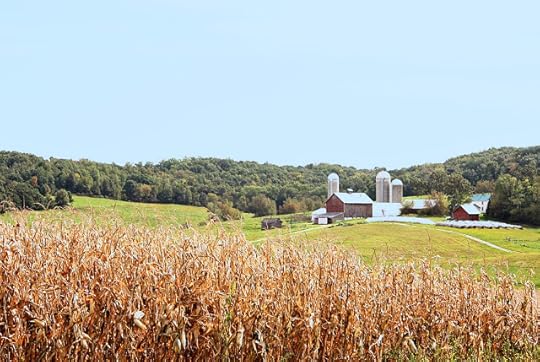 'Oftentimes, the image of the modern environmental movement isn’t super diverse—it’s sometimes seen as a cause led mostly by white people. In this story, Making Contact radio reporters narrate this story of African Americans working for environmental justice in Wisconsin, aiming to make healthy food and positive communities available to everyone.' -- +Bitch Media
'Oftentimes, the image of the modern environmental movement isn’t super diverse—it’s sometimes seen as a cause led mostly by white people. In this story, Making Contact radio reporters narrate this story of African Americans working for environmental justice in Wisconsin, aiming to make healthy food and positive communities available to everyone.' -- +Bitch Media
Published on March 27, 2016 11:17
Do Black Women Matter to the Black Church?
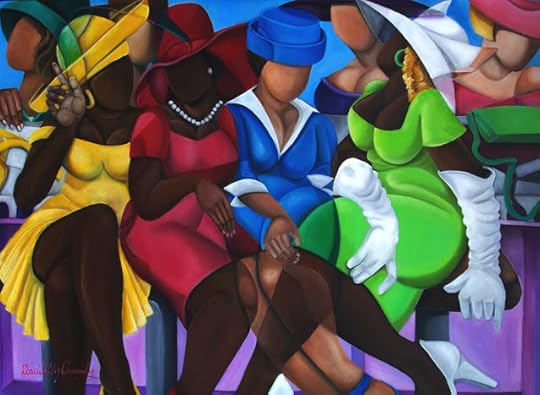 David M. Cassidy: "Two-time Grammy-Award-nominated gospel singer James Fortune physically assaulted a member of his family again. Yes, again.First it was his son. This time it was his wife.On Tuesday, March 8, 2016, Fortune plead guilty to a third-degree felony charge of assault on a family member. He was sentenced to five days in jail and five years probation. He is also required to complete 175 hours of community service and a batterer’s intervention program. And, according to the court order, he must stay away from his wife. The previous incident of assault happened in 2002 when Fortune allegedly doused his four-year-old stepson with scalding water for misbehaving at school, leaving him with burns over 40 percent of his body. Fortune called it a form of discipline.Fortune’s high-profile case offers a glimpse into a much larger problem: many black churches support a social, political, and economic structure that values masculinity over femininity and presupposes men as the prima facie heads of households. Put bluntly, many black churches are patriarchal.Let’s look at a few recent examples of how patriarchy has reared its ugly head in black American Christianity.In 2007 Prophetess Juanita Bynum said former husband Bishop Thomas W. Weeks III physically assaulted her in the parking lot of an Atlanta hotel. A police officer responding to the incident said of Bynum: “She was bruised up and battered. She had purple bruising around her neck and upper torso.” Prominent voices in black churches responded to the incident by painting Prophetess Bynum’s subsequent behavior as disingenuous. They suggested that she was trying to capitalize on the incident—characterizing an abused woman’s response to physical assault as an opportunity for financial gain. This ugly reaction shows how, even when a woman opens up about being physically assaulted, many in the world of black Christendom will view their stories with skepticism and condescension.Yet that is not the only way patriarchy shows itself in black churches. In 2008, current Real Housewives of Potomac star Gizelle Bryant filed for divorce from Baltimore megachurch pastor and community activist Jamal Bryant, citing infidelity and abuse. Bryant later preached a homophobic, misogynistic sermon wherein he said that too many men in the church were “sanctified sissies” before proclaiming, “These hoes ain’t loyal.” This was received with thunderous applause.Many powerful men in the world of black American Christianity are accused of predatory sexual behavior, but few are held accountable. Too often the destructive sexual exploits of powerful black men are overlooked and explained away while black women, if they want to remain members in these churches, are forced to endure an environment that normalizes sexual harassment by way of inappropriate touching, wandering eyes, and treatment like second-class citizens.There are pulpits in black churches, some of them evangelical and in the South, where black women cannot preach. There are too many churches that refuse to ordain a black woman for ministry. Black women are the backbone of black churches, but they have historically been excluded from positions of leadership over men. Their job was to serve men—and not much has changed.Too many black pastors decry racism and economic injustice while supporting ecclesiastical policies grounded in patriarchy. And it’s no justification when clergy and laity use the Bible to support patriarchal positions. The text has been used to defend all kinds of evils, including white supremacy, from the days of slavery to the present. (Jefferson Davis, president of the Confederacy, himself described slavery as “established by decree of Almighty God” and “sanctioned in the Bible, in both Testaments. . . .”)Moreover, a careful reading of the Bible runs against the kind of patriarchy preached or tacitly endorsed in many black churches. Paul uses masculine language in 1 Timothy 3:1–2 when he says “if a man desires the position of a bishop, he desires a good work” and “a bishop then must be . . . the husband of one wife” (New King James Version). These passages appear to endorse marginalizing women in the church, but that is a misreading of the text. Paul is expressing his personal preference in this pericope, a preference shaped by the viciously patriarchal culture of his time. Furthermore, many scholars argue that Paul was addressing an issue specific to the congregation that received the letter. In any case, we misread the text if we infer that all women are precluded from working in ministry.This culture of patriarchy in many black churches puts women and children in a compromised position. It relegates women to praying grandmothers, ushers, and secretaries—roles that are critical to maintaining the culture of the church, but considered marginal in its operation. This culture meanwhile confines children to roles of entertainment, good for Easter speeches and children’s chorale selections on youth Sundays, but worthy of neither respect nor, often times, civility. What’s more, the youth who consistently see women in positions of powerlessness and children in positions of vulnerability will likely either maintain these traditions of patriarchy or eventually leave the church all together upon entering adulthood.As we reflect upon Holy Week, we must also examine the roles people are allowed to play in ecclesiastical bodies and take seriously the importance of each. We must treat women as equal partners with equal opportunities, and we must create environments that don’t permit masculinity to destroy the safety of places and people upon which we rely in times of danger. Until then, cases like those of James Fortune and Juanita Bynam will continue, and black churches will exist at the mercy of their own patriarchy.*A version of this article originally appeared in Dissent. ***
David M. Cassidy: "Two-time Grammy-Award-nominated gospel singer James Fortune physically assaulted a member of his family again. Yes, again.First it was his son. This time it was his wife.On Tuesday, March 8, 2016, Fortune plead guilty to a third-degree felony charge of assault on a family member. He was sentenced to five days in jail and five years probation. He is also required to complete 175 hours of community service and a batterer’s intervention program. And, according to the court order, he must stay away from his wife. The previous incident of assault happened in 2002 when Fortune allegedly doused his four-year-old stepson with scalding water for misbehaving at school, leaving him with burns over 40 percent of his body. Fortune called it a form of discipline.Fortune’s high-profile case offers a glimpse into a much larger problem: many black churches support a social, political, and economic structure that values masculinity over femininity and presupposes men as the prima facie heads of households. Put bluntly, many black churches are patriarchal.Let’s look at a few recent examples of how patriarchy has reared its ugly head in black American Christianity.In 2007 Prophetess Juanita Bynum said former husband Bishop Thomas W. Weeks III physically assaulted her in the parking lot of an Atlanta hotel. A police officer responding to the incident said of Bynum: “She was bruised up and battered. She had purple bruising around her neck and upper torso.” Prominent voices in black churches responded to the incident by painting Prophetess Bynum’s subsequent behavior as disingenuous. They suggested that she was trying to capitalize on the incident—characterizing an abused woman’s response to physical assault as an opportunity for financial gain. This ugly reaction shows how, even when a woman opens up about being physically assaulted, many in the world of black Christendom will view their stories with skepticism and condescension.Yet that is not the only way patriarchy shows itself in black churches. In 2008, current Real Housewives of Potomac star Gizelle Bryant filed for divorce from Baltimore megachurch pastor and community activist Jamal Bryant, citing infidelity and abuse. Bryant later preached a homophobic, misogynistic sermon wherein he said that too many men in the church were “sanctified sissies” before proclaiming, “These hoes ain’t loyal.” This was received with thunderous applause.Many powerful men in the world of black American Christianity are accused of predatory sexual behavior, but few are held accountable. Too often the destructive sexual exploits of powerful black men are overlooked and explained away while black women, if they want to remain members in these churches, are forced to endure an environment that normalizes sexual harassment by way of inappropriate touching, wandering eyes, and treatment like second-class citizens.There are pulpits in black churches, some of them evangelical and in the South, where black women cannot preach. There are too many churches that refuse to ordain a black woman for ministry. Black women are the backbone of black churches, but they have historically been excluded from positions of leadership over men. Their job was to serve men—and not much has changed.Too many black pastors decry racism and economic injustice while supporting ecclesiastical policies grounded in patriarchy. And it’s no justification when clergy and laity use the Bible to support patriarchal positions. The text has been used to defend all kinds of evils, including white supremacy, from the days of slavery to the present. (Jefferson Davis, president of the Confederacy, himself described slavery as “established by decree of Almighty God” and “sanctioned in the Bible, in both Testaments. . . .”)Moreover, a careful reading of the Bible runs against the kind of patriarchy preached or tacitly endorsed in many black churches. Paul uses masculine language in 1 Timothy 3:1–2 when he says “if a man desires the position of a bishop, he desires a good work” and “a bishop then must be . . . the husband of one wife” (New King James Version). These passages appear to endorse marginalizing women in the church, but that is a misreading of the text. Paul is expressing his personal preference in this pericope, a preference shaped by the viciously patriarchal culture of his time. Furthermore, many scholars argue that Paul was addressing an issue specific to the congregation that received the letter. In any case, we misread the text if we infer that all women are precluded from working in ministry.This culture of patriarchy in many black churches puts women and children in a compromised position. It relegates women to praying grandmothers, ushers, and secretaries—roles that are critical to maintaining the culture of the church, but considered marginal in its operation. This culture meanwhile confines children to roles of entertainment, good for Easter speeches and children’s chorale selections on youth Sundays, but worthy of neither respect nor, often times, civility. What’s more, the youth who consistently see women in positions of powerlessness and children in positions of vulnerability will likely either maintain these traditions of patriarchy or eventually leave the church all together upon entering adulthood.As we reflect upon Holy Week, we must also examine the roles people are allowed to play in ecclesiastical bodies and take seriously the importance of each. We must treat women as equal partners with equal opportunities, and we must create environments that don’t permit masculinity to destroy the safety of places and people upon which we rely in times of danger. Until then, cases like those of James Fortune and Juanita Bynam will continue, and black churches will exist at the mercy of their own patriarchy.*A version of this article originally appeared in Dissent. ***Lawrence Ware is an Oklahoma State University Division of Institutional Diversity Fellow. He teaches in OSU’s philosophy department and is the Diversity Coordinator for its Ethics Center. An advisor to Democratic Left and contributing editor at RS: The Religious Left, he has also been a commentator on race and politics for the Huffington Post Live, NPR’s Talk of the Nation, and PRI’s Flashpoint. He is an ordained minister in the Progressive Baptist Convention. Find him on Twitter @law_ware.Lauren Whiteman is an Assistant Director of Student Life and Coordinator for African American Student Programs and Services at the University of Oklahoma. She serves as the advisor for African American Student Life, the Black Student Association, the National Pan-Hellenic Council, and OU Unheard. Lauren’s work focuses on the miseducation of Black and African American students in higher education, advocacy, and student development.
Published on March 27, 2016 04:08
March 26, 2016
How to Use Hip-Hop as A Gateway to Education: In the Classroom with Dr. Chris Emdin
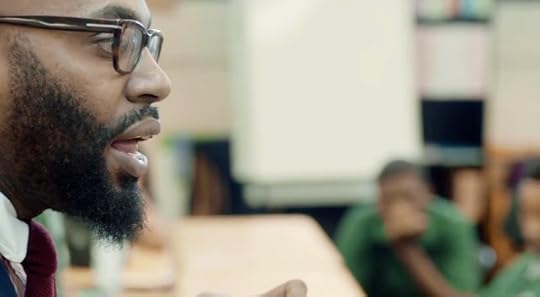 'Our education system has largely given up on students of color who lag academically and show no signs of improvement. In this video clip, Dr. Christopher Emdin shows that it’s not too late. He visits a classroom to illustrate how educators could use hip-hop as a gateway to learning complex science concepts. Dr. Emdin is an associate professor in the department of mathematics, science and technology at Teachers College, Columbia University.' -- +NewsOne Your browser does not support iframes.
'Our education system has largely given up on students of color who lag academically and show no signs of improvement. In this video clip, Dr. Christopher Emdin shows that it’s not too late. He visits a classroom to illustrate how educators could use hip-hop as a gateway to learning complex science concepts. Dr. Emdin is an associate professor in the department of mathematics, science and technology at Teachers College, Columbia University.' -- +NewsOne Your browser does not support iframes.
Published on March 26, 2016 13:14
Duke University’s Plantation Blues by Mark Anthony Neal
 Duke University’s Plantation Bluesby Mark Anthony Neal | @NewBlackMan | NewBlackMan (in Exile)
Duke University’s Plantation Bluesby Mark Anthony Neal | @NewBlackMan | NewBlackMan (in Exile)The Chronicle, the student newspaper at Duke University, has recently run a series of investigative reports related to the university’s Executive Vice-President, Tallman Trask III -- Duke’s primary financial and administrative officer -- who is accused of vehicular assault. The charges stem from an incident at a Duke University football game, nearly two years ago, where Mr. Trask got into a verbal dispute with Shelvia Underwood, a Black parking attendant employed by a local contractor. According to Ms. Underwood, Mr. Trask reacted strongly to her attempts to get him to produce identification; Mr. Trask hit Ms. Underwood with his car and then proceeded to drive off, while referring to Ms. Underwood as a “Stupid Nigger.” Yet, the case with Mr. Trask may not be what defines the state of race at Duke University, which despite all claims of being a liberal institution, remains a largely White elite institution in the American South.
A year ago, and months before campus protest erupted at Yale University and the University of Missouri, a noose was found hanging on Duke’s campus. Much was made on campus about the intent of the student who hung the noose and the university’s response after said student penned a public apology and was allowed to reintegrate into the campus community, in what the University officially claimed was a case of “bad judgement.” Yet the most telling aspect about the incident was who the University felt compelled to communicate information about the incident to.
It goes without saying that the University would communicate the incident to students and even faculty; the communication that lagged was that to Duke service staff, which by Duke’s own reporting is more than 70% Black. To be clear, a potential hate crime occurred at the place of employment of these workers and few in the University’s leadership felt that it was important to communicate this point to its service employees.
This might seem like a minor oversight, but while some Black students might have been spooked by the incident, their relationship to nooses and the anti-Black violence that nooses symbolize is largely metaphoric. For many of the service staff, whose roots in the American South may go back several generations, nooses are much more than metaphoric; rather, they are a reminder on the intimacy that Black southerners have had with anti-Black violence.
The University’s obliviousness to historical and social dynamics of race, speaks broadly to the general lack of humanity assigned to the University’s largely Black service workers, whether it’s the disrespect they may face in the dormitories (and not just by White students), the fears of retaliation that exist if they complain about work conditions, or the simple courtesy of being made aware that an anti-Black hate crime might have occurred in their place of employment. In this context, the incident involving Mr. Trask, if true, is simply an exclamation point on the plantation politics found at Duke University, where the institution’s claims to building community simply ring hollow, if a significant part of the community is regularly rendered silent and invisible.
Yet like any neoliberal institution, or as commentator Astra Taylor described it, “Billion-Dollar Hedge Funds With Schools Attached,” Duke University is self-aware enough of its image, to at least present itself as an institution that is concerned with its employees and the larger communities that they are drawn from.
One such example would be the Duke Homebuyers Club, which is part of the University’s Southside Housing Incentive Program. In partnership with the city of Durham, Duke University has helped revitalize the Rolling Hills neighborhood, which is part of a strategy that many urban universities employ to build buffer communities around their institutions. In many cases it’s a win-win; The University creates the context for first time homeowners who, as employees of the institution, have an investment in protecting the university.
The program hit a snag with the realization that some of the employees were having problems saving or had bad credit, thus university officials created an eight-week program to prepare folk for home buying. Yet, the program speaks of a kind paternalism, as if the University itself wasn’t an agent in the very conditions that led to employees not being able to afford homes.
Durham is a historically Black city -- it is the home of the North Carolina Mutual Life Insurance Company, which was founded in 1898 and is the oldest and largest Black-owned insurance company in the country. Black members of the community are folk for which homeownership is not foreign, but who were priced out by the University’s own hand in development and gentrification in the city of Durham, and because of the kind of depressed wages that occur when service workers, including those who work at Duke University hospital, don’t have adequate organized labor representation. In this context, the idea that folk needed an eight-week class on home purchasing is insulting.
As a late 20th century Ghetto Philosopher once opined, no doubt echoing sentiment expressed by many before him, it’s simply “politics as usual” on Duke University’s plantation.
+++
Mark Anthony Neal is Professor of African + African-American Studies and Professor of English at Duke University.
Published on March 26, 2016 05:13
Mark Anthony Neal's Blog
- Mark Anthony Neal's profile
- 30 followers
Mark Anthony Neal isn't a Goodreads Author
(yet),
but they
do have a blog,
so here are some recent posts imported from
their feed.



